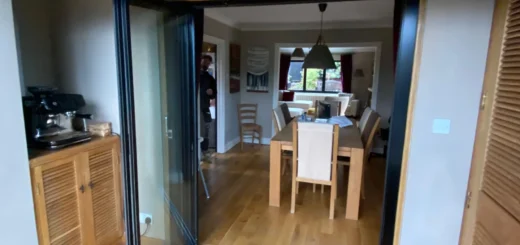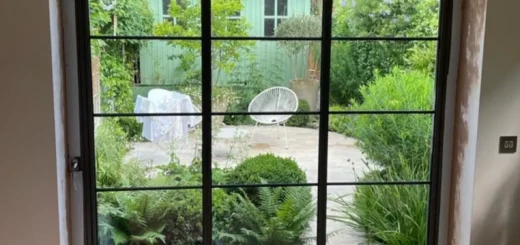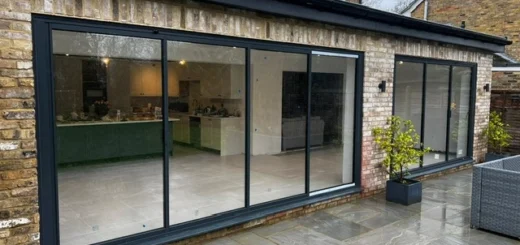Sliding Doors vs Bifold Doors – Detailed Comparison
Table of Contents
Introduction to Sliding and Bifold Doors
British homeowners often grapple with the choice between sliding doors and bifold doors when looking to connect their house with their patio or garden. Both options offer unique benefits, making the decision far from straightforward. Sliding doors, with their large glass panels, provide uninterrupted views and smooth operation. Bifold doors, on the other hand, fold away to create wide openings, completely opening.
The Popularity of Large Glass Doors in UK Homes
Large glass doors have become increasingly popular in British architecture over the past decade. This trend reflects a growing desire among homeowners to bring more natural light into their living spaces and create a stronger connection with the outdoors. Despite the UK’s variable climate, many find that well-designed glass doors can provide year-round enjoyment of their gardens, even on chilly days.
The choice between sliding doors vs bifold doors isn’t just about aesthetics. It impacts how you use your space, your home’s energy efficiency, and even your property value. Each type of door has its strengths and weaknesses, which vary depending on factors like the size of your opening, your lifestyle, and your budget.
Key Factors to Consider
Available Space
The amount of space you have plays a big role in deciding between sliding or bifold doors. Sliding doors require a track along which the panels move, while bi-fold doors need space to stack when open. Your room’s layout and the desired opening width will influence which option works best.
Desired Aesthetic
Your home’s architectural style should guide your choice. Modern, minimalist interiors often pair well with the clean lines of sliding doors. In contrast, bifold doors can add character to both contemporary and traditional homes, thanks to their flexible design options.
Practical Needs
Think about how you’ll use the doors day-to-day. If you frequently entertain or have young children running in and out, the wide opening of bifold doors might be ideal. For those who prioritise unobstructed views or want to let in the most natural light, sliding doors could be the better choice.
Budget
Cost is an unavoidable factor in any home improvement decision. Generally, sliding doors tend to be less expensive than bifold doors, especially for larger openings. However, prices can vary widely based on materials, size, and additional features.
Key Differences Between Sliding and Bifold Doors
The most obvious difference between sliding doors vs bifold doors is the opening mechanism.
How Sliding Doors Work
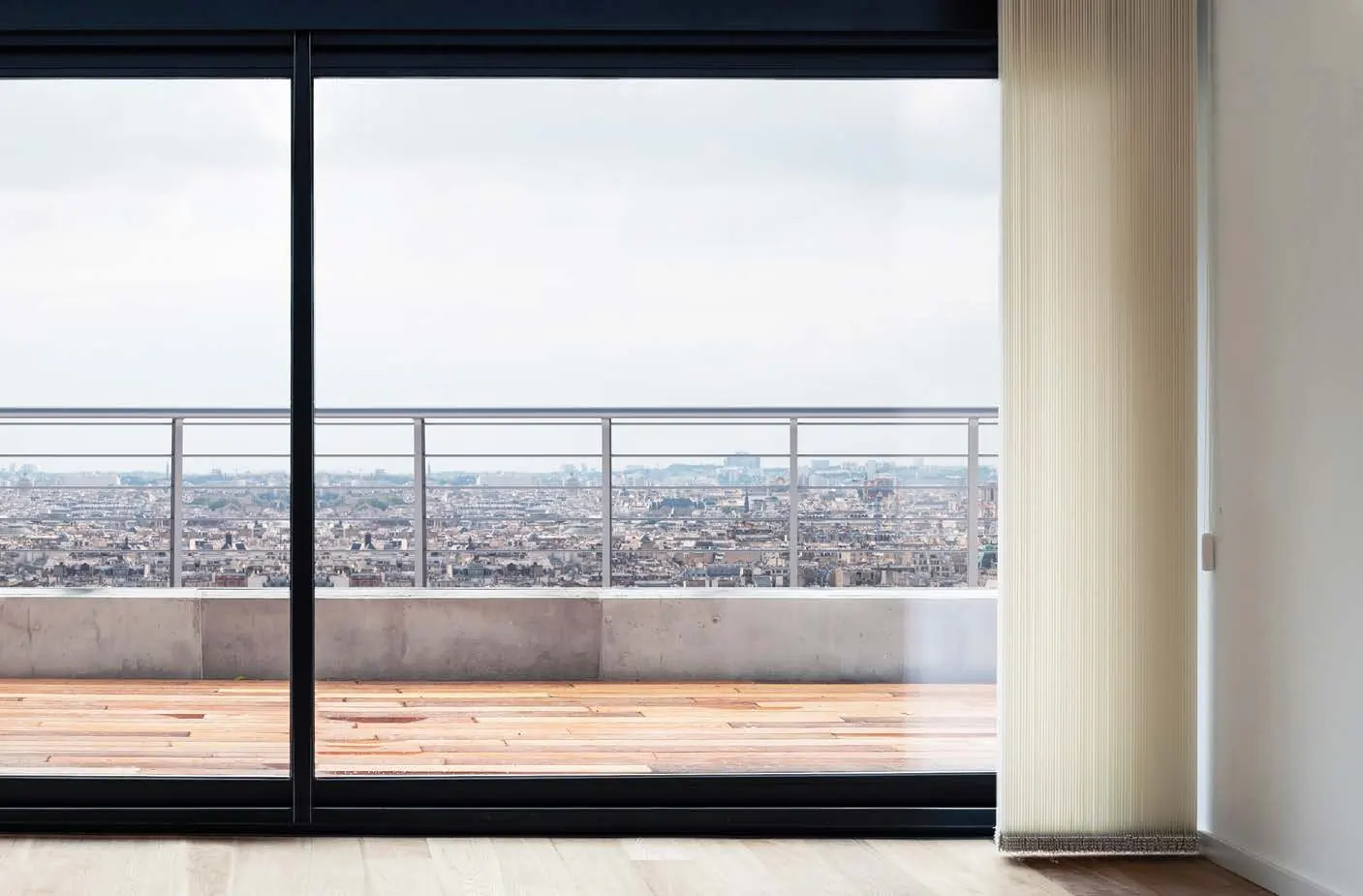
Sliding doors consist of large glass panels that glide along a track. Typically, one panel remains fixed while the other moves horizontally. Some designs feature multiple panels, allowing for various configurations. The beauty of sliding doors lies in their simplicity – a gentle push sets them in motion, revealing the outdoor space beyond.
Modern sliding door systems often incorporate advanced roller mechanisms, ensuring smooth operation even with large, heavy panels. This design allows for expansive glass areas, maximising views and natural light. The track system can be recessed into the floor, creating a flush threshold that’s easy to step over.
How Bifold Doors Work
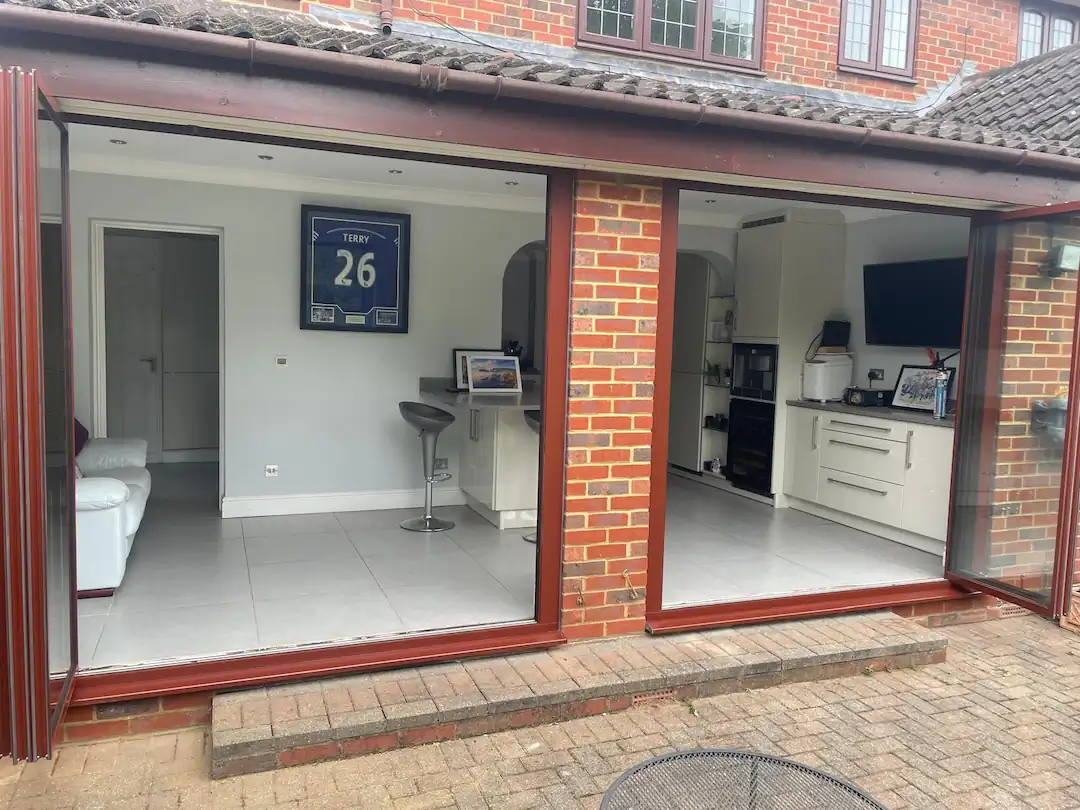
Bi-fold doors, also known as folding doors, are made up of multiple panels connected by hinges. When opened, these panels fold against each other, accordion-style, and stack neatly to one or both sides of the frame, allowing for a wide, unobstructed opening when fully retracted.
The operation of bifold doors relies on a top-hung or bottom-rolling system. Top-hung doors are supported by a track above, which bears the weight of the panels. Bottom-rolling systems use a floor track to guide the doors, distributing the weight. Each system has its advantages, with top-hung generally offering smoother operation and bottom-rolling providing more stability.
Sliding Doors vs Bifold Doors: Basic Features
While both sliding or bifold doors serve to connect indoor and outdoor spaces, their different mechanisms lead to distinct characteristics. Sliding doors excel in providing uninterrupted views even when closed, thanks to their large glass panels and minimal framing. They’re particularly suited to homes where space is at a premium, as they don’t require additional room to open.
Bifold doors, in contrast, offer the advantage of opening up almost the entire aperture, making them ideal for summer entertaining or bringing the garden into your living space. However, when closed, bifold doors have more visible framing than sliding doors, which can slightly obstruct views.
Both door types come in a range of materials, including aluminium, timber, and uPVC. Your choice of material will affect not only the look of the doors but also their thermal efficiency, durability, and maintenance requirements. Aluminium bifold or sliding doors, for instance, offer a sleek, modern appearance and require little upkeep, while timber frames provide a warm, traditional look but may need more regular maintenance.
Space Requirements and Efficiency
The impact of bifold or sliding doors on your living space extends beyond mere aesthetics. Each type has different spatial needs, influencing how you arrange furniture and use the area around them.
Space Needs for Sliding Doors
Sliding doors shine in rooms where space is at a premium. Their operation doesn’t require additional clearance beyond the frame, making them ideal for snug areas or where furniture placement is limited. The panels glide parallel to the wall, staying within their own footprint.
In a typical installation, a 4-metre wide sliding door might consist of two 2-metre panels, with one fixed and one mobile. The mobile panel slides behind the fixed one, leaving half the aperture open. This configuration allows for partial opening, useful for ventilation without fully exposing the interior to the elements.
Space Needs for Bifold Doors
Bifold doors require more thought regarding space planning. When open, the panels fold and stack perpendicular to the wall, creating a wider aperture but also occupying floor space. This stacking zone needs to remain clear of furniture and foot traffic.
The advantage of bifold doors lies in their ability to open up almost the entire aperture. For those who frequently entertain, this feature can be a game-changer.
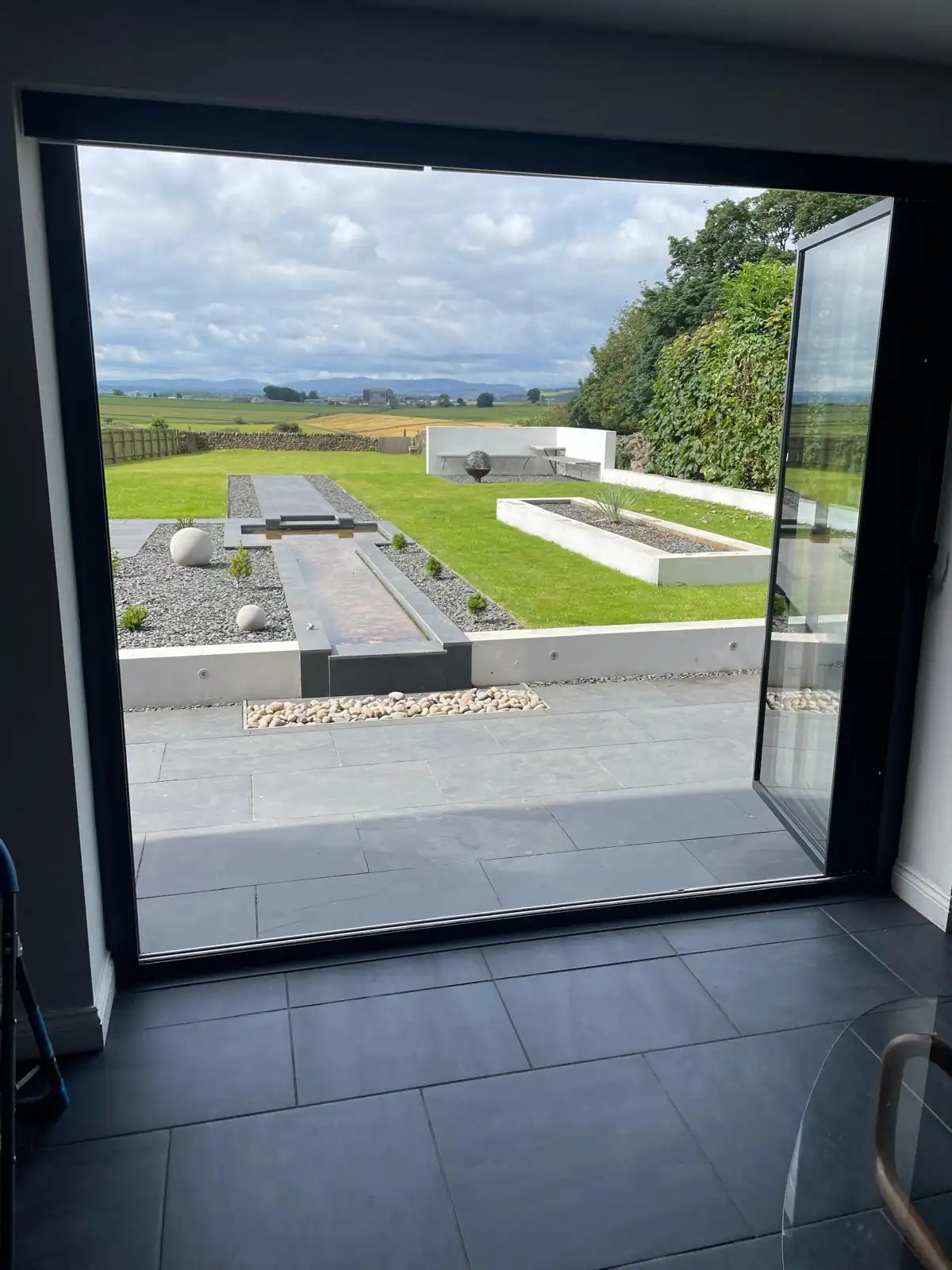
Sliding Doors vs Bifold Doors: Space Efficiency Comparison
When weighing up bifold or sliding doors, think about how you’ll use the space daily. Sliding doors offer consistent usability – whether open or closed, the space around them remains largely the same. This predictability can be a boon for furniture arrangement and traffic flow.
In smaller rooms, sliding doors often prove more practical. They don’t impinge on limited floor space and can provide a sense of openness even when closed. For larger areas where space is less of a concern, bifold doors can create a dramatic effect, effectively doubling your usable space in good weather.
Your choice between sliding or bifold doors will depend on your specific spatial needs and how you envision using your doors.
Weather Resistance, Durability, and Maintenance
Living in Britain means contending with a variety of weather conditions, from driving rain to occasional heatwaves. Your choice of sliding or bifold doors needs to stand up to these challenges while keeping your home comfortable and secure.
Sliding Doors: Weather Performance and Upkeep
Sliding doors often excel in weather resistance due to their simple design. With fewer moving parts and a straightforward sealing system, they typically offer excellent protection against the elements. The large, uninterrupted glass panels can also contribute to better insulation, helping to maintain a consistent indoor temperature.
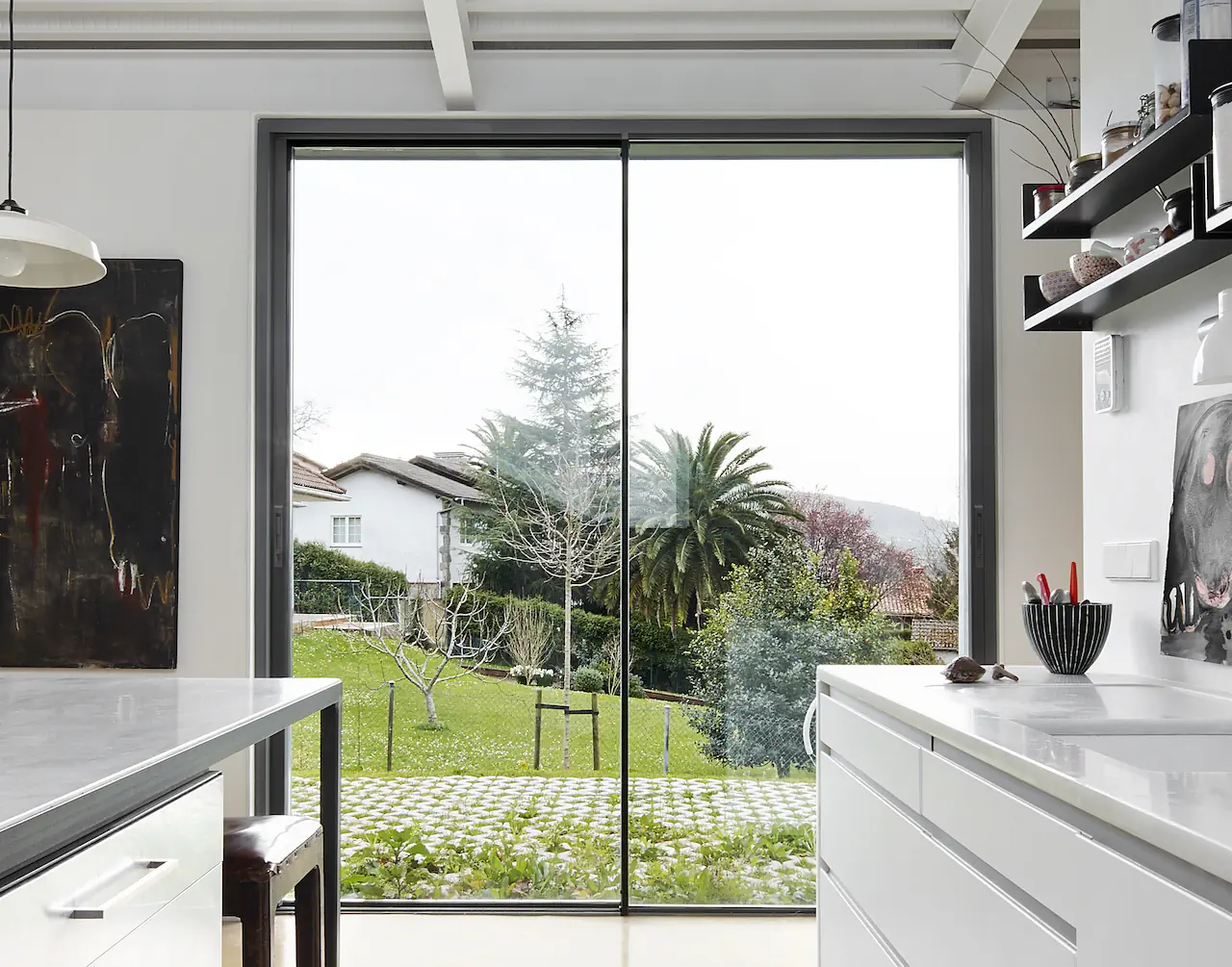
However, the tracks that allow sliding doors to glide smoothly require regular cleaning. Debris can accumulate in these channels, potentially affecting the door’s operation if left unchecked. A quick once-over with a vacuum or brush every few weeks usually suffices to keep things running smoothly.
The large glass areas of sliding doors can be a boon in winter, allowing sunlight to warm your home naturally. But in summer, this same feature might lead to overheating. Many homeowners opt for solar control glass or external shading to manage heat gain effectively.
Maintenance for sliding doors is generally straightforward. The main tasks involve keeping the tracks clean, lubricating the rollers occasionally, and checking the seals for wear. With proper care, sliding doors can remain weather-tight and easy to operate for many years.
Bifold Doors: Weather Performance and Upkeep
Bifold doors, with their multiple panels and hinges, present a different set of considerations when it comes to weather resistance. Modern bifold systems use advanced sealing techniques to create a weather-tight barrier when closed. However, the increased number of seals and joints means there are more potential points for weatherproofing to fail over time.
Maintenance for bifold doors focuses on the hinges and tracks. These components need regular cleaning and lubrication to ensure smooth operation. The multiple seals between panels also require periodic checks and potential replacement to maintain optimal weather resistance.
One unique aspect of bifold doors is their ability to be fully opened, allowing for excellent ventilation on warm days. This feature can help cool your home naturally, potentially reducing reliance on air conditioning during British summer heatwaves.
Sliding Doors vs Bifold Doors: Durability and Security
When it comes to longevity, both sliding doors and bifold doors can last for decades with proper care. The choice between sliding doors vs bifold doors often comes down to personal preference and specific site conditions rather than durability concerns.
Security is a key factor to think about for any external door. Sliding doors typically use multi-point locking systems along the opening edge, providing robust security. Bifold doors secure each folding panel to the next, with additional locks at the top and bottom of the opening panels. Both types can be fitted with high-security glass and locking mechanisms to deter intruders.
The weather performance of your doors – whether sliding or bifold – will depend largely on the quality of the product and installation. High-end systems in both categories offer excellent protection against British weather, keeping your home dry and draught-free.
Ultimately, your lifestyle and willingness to perform regular maintenance will play a role in determining whether bifold or sliding doors are best for you. If you’re after a low-maintenance option, sliding doors might have a slight edge. For those who don’t mind a bit more upkeep in exchange for flexibility, bifold doors could be the perfect choice.
Sliding Doors vs Bifold: Ease of Use
The day-to-day operation of your doors can have a surprising impact on how you interact with your living space.
Operating Sliding Doors
Sliding doors are known for their effortless operation. A gentle push is usually all it takes to set a well-maintained sliding door in motion. The weight of the door is supported by rollers that glide along a track, making it easy to open and close even large panels with minimal effort.
Most sliding door systems allow for smooth, one-handed operation. This can be particularly useful when you’re carrying shopping bags or a cup of tea out to the garden. The ease of use extends to children and older adults, who might struggle with heavier, swinging doors.
One potential drawback of sliding doors is that they typically don’t open fully. In a standard configuration, you might be able to open about 50% of the total width. While this is usually sufficient for everyday use, it might feel restrictive if you’re moving large furniture or hosting a big garden party.
Operating Bifold Doors
Bifold doors offer a different user experience. When opening bi-fold doors, you typically start by operating a main ‘traffic’ door, which can be used for quick access without opening the entire system. From there, you can unfold the remaining panels, concertina-style, to create a wide opening.
The folding action of bifold doors requires a bit more effort than sliding a single panel. However, well-designed systems use high-quality hardware to ensure smooth operation. Many homeowners find the process of opening bifold doors quite satisfying, likening it to unveiling a grand view of their garden.
Sliding Doors vs Bifold Doors: Usability Comparison
When deciding between bifold or sliding doors, consider how you’ll use them most often. If quick, frequent access is your priority, sliding doors might have the edge. Their simple operation makes them ideal for popping in and out of the garden or letting pets come and go.
On the other hand, if you’re after maximum flexibility and the ability to open up your entire space, bi-fold doors could be the winner. While they require a bit more effort to fully open, the results can be spectacular, especially for entertaining or enjoying long summer evenings.
It’s worth noting that the ease of use for both sliding or bifold doors can be influenced by the quality of the system and installation. High-end products in both categories offer smoother operation and require less force to open and close.
Sliding Doors vs Bifold Doors: Style and Customisation Options
Design Options for Sliding Doors
Sliding doors often embody a sleek, modern aesthetic. Their large, uninterrupted glass panels create a minimalist look that complements contemporary architecture. However, this doesn’t mean sliding doors are limited to modern homes.
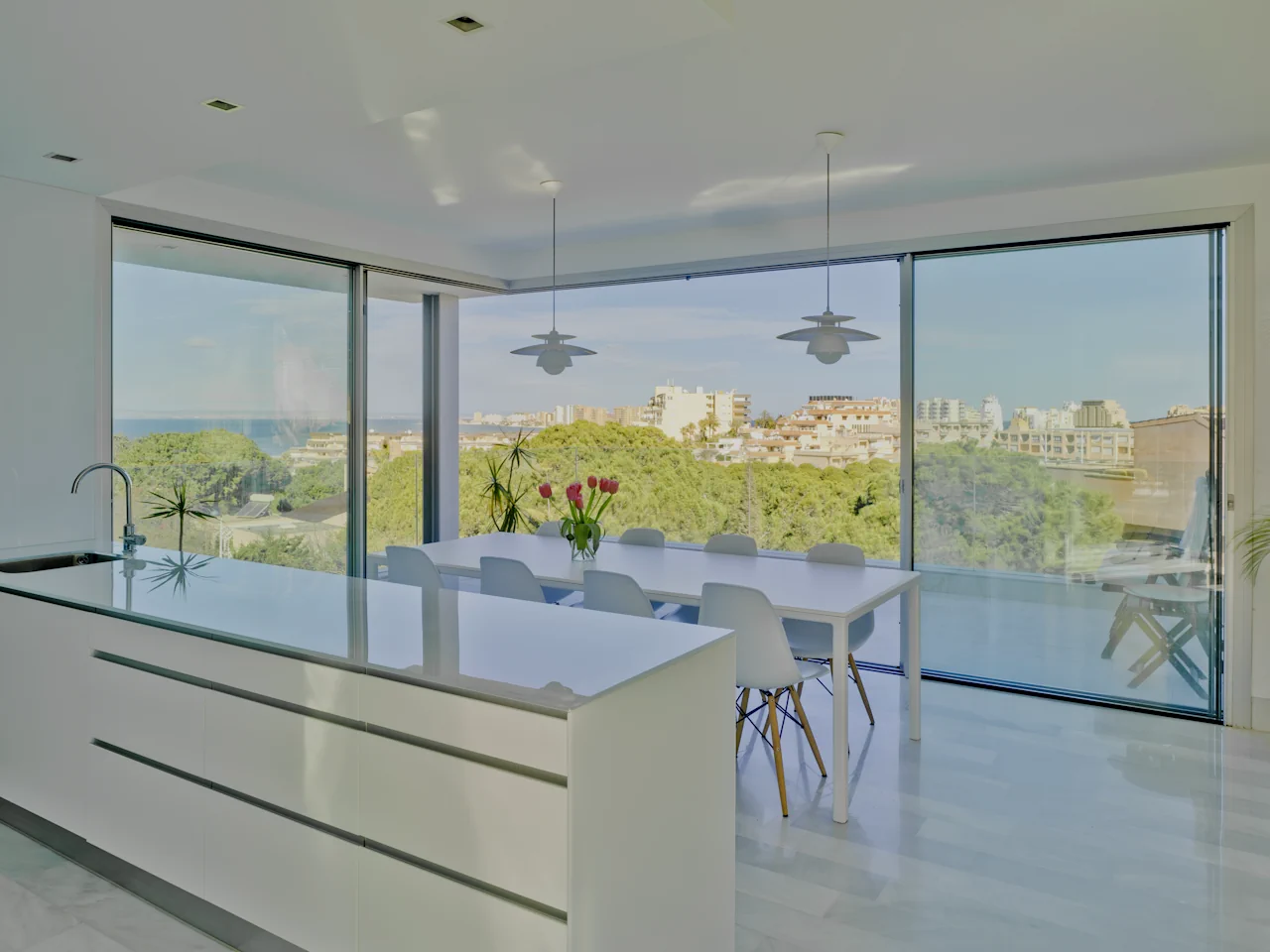
Aluminium frames offer a slim profile, maximising the glass area and creating a cutting-edge appearance. Timber frames, on the other hand, can add warmth and character, fitting well with more traditional or rustic interiors.
Colour choices for sliding door frames are virtually limitless. While neutral tones like white, black, and grey remain popular, bold colours can make a striking statement. Some homeowners opt for dual-colour designs, with different shades on the interior and exterior to complement both indoor and outdoor colour schemes.
Glass options for sliding doors extend beyond clear panes. Frosted or patterned glass can provide privacy without sacrificing light, while tinted glass can reduce glare and heat gain. For a truly bespoke touch, some manufacturers offer the option to incorporate blinds within the glazing unit.
Design Options for Bifold Doors
Bifold doors offer similar material and colour options to sliding doors, but their multi-panel design opens up additional possibilities. The configuration of the panels can be customised to suit your space and preferences.
Some systems feature visible hinges for an industrial look, while others conceal the hardware for a cleaner aesthetic. The width of the frames between panels can also vary, allowing you to choose between a more traditional look with wider frames or a contemporary style with slimmer profiles.
One unique design feature of bifold doors is the option to incorporate a ‘traffic door’. This single panel operates like a standard door, allowing quick access without opening the entire system. It’s a practical feature that doesn’t compromise the overall design.
Sliding Doors vs Bifold Doors: Aesthetic Comparison
Sliding doors tend to offer more unobstructed views when closed, creating a ‘picture frame’ effect for your garden or landscape. Their clean lines and large glass panels can make a space feel larger and more open.
Bifold doors, with their segmented design, create a different visual rhythm. When closed, the vertical lines of the frames can add interest to a plain wall.
Your choice between sliding or bifold doors might be influenced by your home’s existing features. In a period property with sash windows, for example, sliding doors might provide a complementary vertical emphasis. A cottage with small-paned windows might be better suited to bifold doors with multiple panels.
Slide and Fold Doors – Best of Both Worlds?
If you’re still torn between bifold or sliding doors, there’s a third option that combines elements of both: slide and fold doors. This hybrid design aims to offer the best features of sliding and bifold systems in one package.
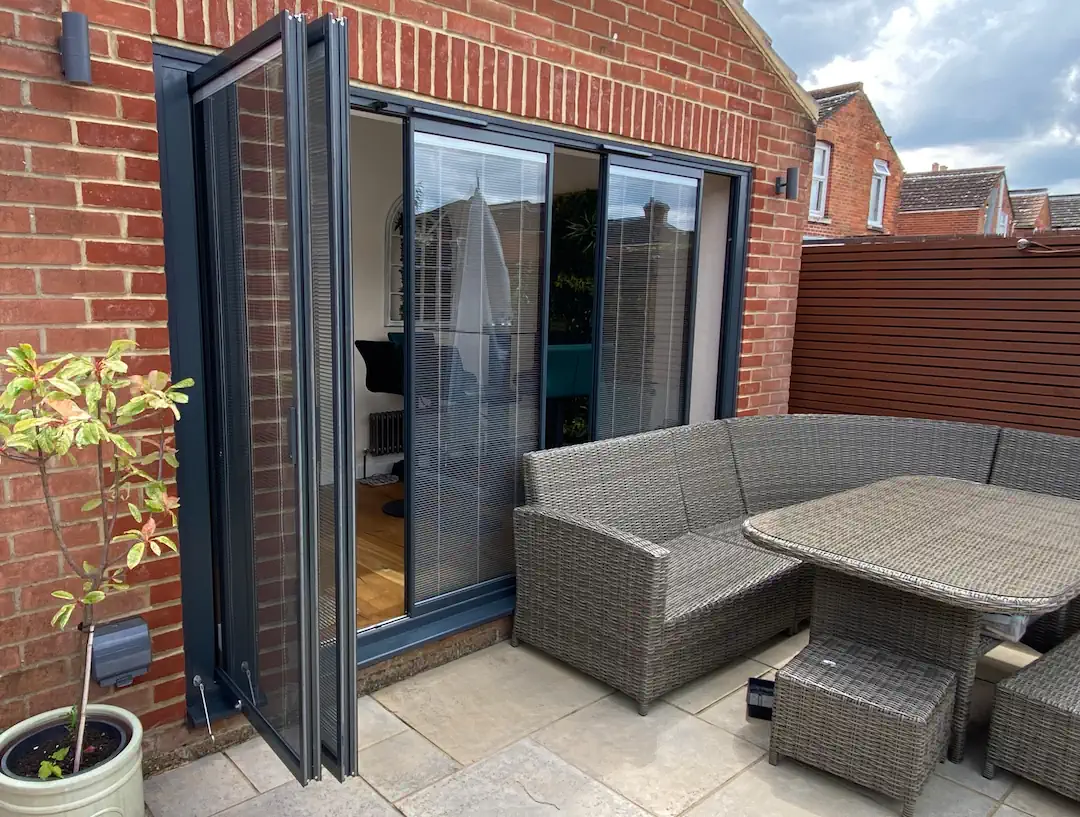
Slide and fold doors, also known as slide and pivot or slide and stack doors, are a type of modern patio doors which operate on a principle that’s a bit different from standard bifold or sliding doors. The panels slide along a track like sliding doors, but can also pivot to stack perpendicular to the opening, similar to bifold doors.
This unique mechanism allows for flexible opening configurations. You can slide a single panel for quick access, much like a sliding door. When you want a wider opening, you can slide and pivot multiple panels to stack them at one or both ends of the frame. This versatility can be particularly useful in changeable weather conditions.
One key advantage of slide and fold doors is the potential for larger panes of glass compared to standard bifold doors. This means you can enjoy expansive views when the doors are closed, similar to sliding doors. When open, they offer the wide aperture typically associated with bifold systems.
Frequently Asked Questions
What are the main differences between sliding doors vs bifold doors?
Sliding doors operate on a track, with panels gliding parallel to the wall, while bifold doors fold accordion-style. Sliding doors typically offer larger uninterrupted glass areas when closed, providing clearer views. Bifold doors, however, can open up almost the entire aperture, creating a wider opening to the outdoors.
How do bifold or sliding doors affect energy efficiency in a home?
Both sliding doors and bifold doors can be energy efficient when properly installed and sealed. The key factor is the quality of the glass and frame materials used, rather than the door type itself. However, aluminium sliding patio doors might have a slight edge in energy efficiency due to their simpler design with fewer potential gaps.
Are bifold doors or sliding doors better for small spaces?
In small spaces, sliding doors often have the advantage. They don’t require additional space to open, as the panels simply glide along their track. Bifold doors, while offering a wider opening, need clearance space for the folded panels when open, which might be challenging in compact areas.
How do sliding doors vs bifold doors compare in terms of maintenance?
Sliding doors typically require less maintenance due to their simpler mechanism. The main task is keeping the tracks clean and occasionally lubricating the rollers. Bi-fold doors, with more moving parts, might need more frequent adjustments and lubrication of hinges and runners to ensure smooth operation.
Are sliding or bifold doors suitable for modern architectural styles?
Both sliding and bifold doors can complement modern architectural styles. Sliding doors offer clean, minimalist lines that often suit contemporary designs. Bifold doors, especially those with slim frames, can create a striking modern look when fully opened.
Which option is more child-safe: sliding doors vs bifold?
Both sliding doors and bifold doors can be child-safe when properly designed and installed. Sliding doors might have a slight edge as they’re less likely to cause pinched fingers. However, many bifold doors now come with finger-safe gaskets between panels. The key is choosing doors with safety features and teaching children how to use them properly.
What materials are commonly used for sliding doors and bifold doors?
Sliding doors and bifold doors are available in similar materials. The most common options are uPVC, aluminium, and timber. uPVC is budget-friendly and low-maintenance, aluminium offers strength and slim profiles, while timber provides a traditional look. The choice often depends on your budget, desired aesthetics, and maintenance preferences.
Are bifold doors or sliding doors suitable for use as interior doors?
Both bifold and sliding doors can work well as interior doors, each offering unique benefits. Interior sliding doors are excellent space-savers and can provide a sleek, modern look. Bifold doors can be a great choice for closets or as room dividers, allowing for a wide opening when needed.
How do sliding doors vs bifold doors compare in thermal efficiency?
The thermal efficiency difference of sliding doors vs bifold doors isn’t necessarily much. It depends more on the quality of materials and installation than the door type itself. Both can offer excellent insulation when fitted with high-quality, double or triple-glazed glass and thermal breaks in the frames. However, sliding doors might have a slight advantage due to their simpler sealing system.
Can bifold or sliding doors be custom-coloured to match existing décor?
Yes, both bifold or sliding doors can be customised in a wide range of colours. Many manufacturers offer a selection of standard colours, and some provide the option for custom RAL colours, especially for bespoke bifold doors or sliding doors. This allows you to match your doors to your existing windows, décor, or create a contrasting feature.
Which option requires less maintenance: sliding doors vs bifold?
Generally, sliding doors require less maintenance than bifold doors. This is due to their simpler mechanism with fewer moving parts. Bi-folding doors, with their multiple hinges and panels, typically need more regular checks and adjustments to ensure smooth operation.
Can both bifold or sliding doors be fitted with low thresholds?
Yes, bifold or sliding doors can both be fitted with low threshold options. These designs help create a level threshold (step) between the indoor and outdoor sides, improving accessibility. However, it’s important to note that the lowest threshold options might compromise weatherproofing slightly, so consider your specific needs and local climate.
Which option is more suitable for period properties: sliding doors vs bifold?
The choice between sliding doors vs bifold doors for period properties often depends on the specific architectural style and personal preference. Sliding doors can offer a clean, unobtrusive look that doesn’t compete with period features. Bifold doors, particularly those with a traditional design, can complement older properties while providing modern functionality. Some styles of doors are designed with period features too, such as our Georgian Patio Doors with Integral Bars.
About SunSeeker Doors
With over 20 years of experience, SunSeeker Doors remains at the forefront of door design with our quality-tested patio doors and related products, including the bespoke UltraSlim aluminium slide and pivot door system, Frameless Glass Doors, and Slimline Sliding Glass Patio Doors. All of our doors are suitable for both internal and external use.
To request a free quotation, please use our online form. You may also contact 01582 492730, or email info@sunseekerdoors.co.uk if you have any questions.


